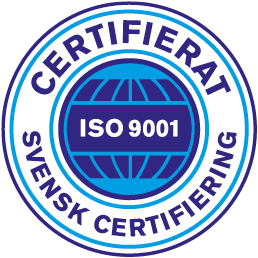S&OP MasterClass™
Mellem kriser: fra udsolgt til overskudslager
Velkommen til denne S&OP MasterClass.
Disse MasterClasses dykker ned i Integrated Business Planning og Supply Chain Planning generelt og giver dig forhåbentlig nogle gode inputs undervejs.
894035877
I denne S&OP MasterClass™ fokuserer vi på markedsudsving - et marked, der er præget af krise efter krise. Den aktuelle inflationssituation har endnu en gang skabt nye forhindringer for supply chain managers i deres planlægning.
Hvad er de største udfordringer for virksomheder i dag, når de skal komme sig efter COVID-19? Disse udfordringer omfatter håndtering af en global krise, en russisk krig i Ukraine og europæisk inflation. Hvordan overvinder virksomhederne disse udfordringer?
Stefan Sørensen, PERITO IBP ekspert, vil dele tips og tricks, som virksomheder kan implementere i deres nuværende forsyningskæde.
Connect med Søren Hammer Pedersen
I denne episode
Nedenfor er de afgørende tidsstempler fra denne podcast-episode. Du kan springe til de emner, der interesserer dig.
00:00 Introduktion
01:57 Hvad er en vurdering af forsyningskæden?
05:30 Hvor skal du starte, når du vurderer forsyningskæden?
07:01 Datakvalitet
10:48 Lagerstrategi og hvad den gør
13:28 Første trin i vurderingen af forsyningskæden: Se på efterspørgslen
17:36 Lageranalyse, leverandøranalyse - hvordan?
20:35 At få den rigtige business case
23:25 Råmateriale og komponenter i vurderingen
24:31 Analyse af business case-potentiale
26:43 Automatisering og de værktøjer, du har brug for
32:26 Hvad er de kritiske faktorer, der afgør, om en vurdering af forsyningskæden lykkes eller ej?
Transskriberet version
Søren [00:09]:
Hello, everybody. Warm welcome to this S&OP Masterclass from Perito Consulting. My name is Søren Hammer Pedersen, and I’ll be your host for this podcast here today. The purpose of these Masterclasses is to give you some insights into how we work with our clients in their supply chain planning, and hopefully give you some chips and tricks that you can implement in your daily life to improve the performance in your company.
Søren [00:34]:
Today’s topics is quite a big one. We have a bold statement saying that you as a supply chain professional, actually need to change your perspective on supply chain management because that’s happened so much in the world in recent time. But to avoid that, you’re just still listening to my ramblings all along, I have brought along my very good colleague, Stefan SØrensen to give his perspective on this exciting topic.
Søren [00:58]:
So, Stefan warm welcome to the podcast.
Stefan [01:01]:
Thank you very much.
Søren [01:10]:
People might not have touched upon you yet as a professional here, so could you please just start by introducing who is Stefan and what your profession?
Stefan [01:19]:
Sure. I’ll be happy to. Well, I’ve got a long background within business consulting and also ERP implementations, business intelligence implementations, and especially planning solutions over the past, I would say, 20 years. And I’ve worked in a wide range of different planning applications. So, I have, I wouldn’t say unique experience, but the experience of both having to consult on the operating models of our clients, but also take it all the way back to the nitty gritty details in the IT systems. So, I have sort of a wide-ranging experience.
Søren [01:57]:
Perfect. And maybe also just for staying with the definitions, we’re going to say supply chain planning, integrated business planning, a lot of other things like that along. Just your perspective, just from a definition point of view, what do we mean when we say this supply chain planning and IBP?
Stefan [02:15]:
Yeah, IBP in my view anyway, is sort of a further development on what happened, I would say 15, 10-15 years ago, where it was called sales and operations planning, which was basically the target of making sales talk to operations about their planning, which is today sounds pretty obvious. Then IBP, the very simple definition is basically saying, “Well, now we also need to talk to finance. We need the economic figures on top of the planning to make sure that the decisions we make between sales and operations are also financially feasible.” So, that’s the simple definition.
Stefan [02:54]:
I also have a story going back 10 years, back in the time when it was actually called sales and operations planning. And back then I had a client where I was presenting for two hours, a complete S&OP strategy, including architecture, solution architecture, et cetera. And after two hours, the principle contact in the company stood up and said, “Well, now we should remember that S&OP processes are only 10% IT and 90% people.” And I remember clearly that back then, I thought that that was a pretty stupid comment. But today, I would even say that today, if you have a supply chain responsible, who has that view on sales and operations planning, they should simply be fired.
Stefan [03:45]:
So, I know that’s a little bit crass statement, but my view is back to the point of defining IBP. The point of IBP is also that it’s hugely IT driven today. And that might be a surprise to, especially the C level in stakeholders in the organization.
Søren [04:05]:
Yeah. So, talking about IBP and supply chain planning, you have quite a bold statement. I started with it stating that we actually think that supply chain professionals need to do something different now because a lot have happened. And you actually say that if they want to compete going forward here, they need to change their view. Could you elaborate a little bit on basically where have we been and where are we now to support that statement?
Stefan [04:33]:
Yeah. I would say there’s two different perspectives to that statement. One is of course that well, consultants have always tried to tell their clients that they’re living in changing times or ever-increasing changing times. But what we’ve seen in the past two to three years is not just changes, but what we would characterize as direct crises. So, first of all, the COVID that we’ve talked a lot about, but now also the inflationary situation, which has come about because of, amongst other things, the crisis around the world, supply chain crisis, crisis in Ukraine, et cetera. So that’s pretty known crisis, but I think that’s the main change.
Stefan [05:21]:
Then we also have the big change on the technology front. So, a change that would’ve happened anyway, even if we hadn’t had the crises that we’ve seen and that’s basically to do with the IT capabilities as well. So, the IT capabilities of course, allowing for handling huge amounts of data, we’re going from a sort of a signical handling of data into a real time enablement, real time meaning that we have direct contract to the transactions, so the planning and the transaction systems are tied together directly. So, I would say that those are the two main drivers of why this is an interesting topic.
Søren [06:06]:
So really what you’re saying is that the supply chain professionals have gone from one firefighting situation into the next one without really having the time to adopt here.
Stefan [06:19]:
Yes. You could say supply chain again, put a little bit on the edge, supply chain organizations has been characterized by firefighting for basically ever. So, the feeling that as soon as you have a purchase order that hasn’t gone through, then picking up the phone, calling the vendor, et cetera. All of those manual processes, we basically need to recognize that they should go away and they should purely be based on IT systems and very structured processes. So, you go from a perspective where you have, I used to use the metaphor of the old ships back hundreds of years ago compared to oil tankers today, which are driven by or sailed by a few people on deck. That’s basically the perspective you need to adopt, to understand the future supply chain.
Søren [07:14]:
Okay. So really to elaborate a bit more on that, we have this new situation. It could be interesting to just come around the point, what is it that the companies are facing in this new situation? They had had a situation where, at least many of our clients had the situation that in terms of stock and buying things in, they just needed to get something in, to get out to the clients. It seems like it’s a whole new world now. Now we really have to think about the inventories, how much do we actually have on stock, do we want things coming in. So, could you elaborate a little bit what are the companies facing now that’s new to them in this new situation?
Stefan [07:54]:
Yeah. You can say it’s always a bad thing for a supply chain to change perspective from basically you have a sales organization who’s able to sell everything they can get their hands on, to a situation where they’re basically stuck with inventory and the demand is declining rapidly. And of course, it’s not, the other complexity is that it’s not decreased. The demand is not decreasing uniformly across all their product areas, across all industries. So, you have some product groups which are actually benefiting from certain crisis elements and then you have some that are declining rapidly. So how to deal with those discrepancies?
Stefan [08:36]:
And then at the same time, as you have the fear of recession in the companies, you also have the huge fear of missing out. And we saw that extremely clearly in the COVID crisis where everybody was on their toes, trying to pick up exactly when the demand would pick up again. So, adjusting your planning so they would hit exactly and benefit from the… They knew the demand would increase again at some point back to their normal levels or even higher in a whiplash effect on the other side of the crisis.
Søren [09:06]:
But in your opinion, is that why we see those really high inventories now in many companies? Is that because companies has tried to hit that and missed it basically?
Stefan [09:18]:
Yes. To some degree, you will never be able to hit it completely that demand pickup when it happened. But it’s also to do with the global supply chain crisis that they were simply… On the demand side, we’ve talked about that now, but if you turned around and look back at the supply side, you also had huge difficulty in getting the components you needed to produce the products you needed, et cetera. And that has also left some feeling that you basically went back 20 years in your processes and picked up the phone and asked for 200 more than you actually needed. So, you basically build up a lot of tactical stock on certain materials because of the fear of going stock out on certain components and not being able to deliver to your customers. Both of those effects have hit the current stock levels in many of our clients, at least at the moment.
Søren [10:14]:
So, I guess also one thing we hear a lot about that facing companies and facing supply chain professional is the cost of money. To put it a bit … money has been free. For a while, that’s not the case. It seems like the working capital perspectives and things like that is creeping in big time again, into the companies. How do you experience that in dealing with your customers?
Stefan [10:42]:
Yeah. I would still say the inflationary problems we have now, the increase of the cost of the components is sort of an add-on effect to the two other effects I just mentioned. So, the supply chain crisis and the difficulty in hitting the demand plan in these very fluctuating times, then the inflationary crisis is just an add-on to those two problems, making those wrong decisions even more expensive. The other effect is that the pure effect of the increase in cost of capital is simply that there’s a huge focus on decreasing net working capital in all companies.
Stefan [11:22]:
And we’ve seen actually, I’ve had at least three different client situations where we’ve been told that, “Yeah, it’s fine that you can balance the stock levels, et cetera, optimizing the safety stock levels, et cetera, tracking whether we are over, under stocked on certain materials.” But we actually also on top of the optimal level dependent on these demand fluctuations. We actually also have a direct communication from the board that we are not allowed to go above this particular level of net working capital or in this case, the inventory value that should be kept at, let’s say 400 million, no matter what. And then it turns, of course you still need the optimization methodologies, et cetera, but there’s an added constraint that, “Okay, if the optimal level was actually 450 million, okay, where do we cut the 50 million?” Then you need to go back and find out, “Okay, what materials are we actually able to reduce knowing full well that, that will also theoretically reduce our delivery performance on certain components.” That’s just the fact of life, but it’s also something that they need to take seriously. Otherwise, they get fired.
Søren [12:35]:
Yeah, exactly. I think that’s a very interesting point in terms of why the situation has changed. I think supply chain planning has always, to some extent, been on the C level attention in the companies, but the attention is increasing. That’s for sure, because it has such a massive effect on company performance in the situation we are in now.
Stefan [12:58]:
Exactly. And you can say, I mentioned before that sales was basically the driving force in any company and as long as they were able to sell everything, they were. They were going to do that and they were allowed by the boats to simply go ahead. But now we see this effect that they need to… they are not able to sell, and then basically they’re going from a focus on delivery performance. Then the board turns around and looks at the net working capital again, like they did many years ago and that’s a completely… From a supply chain perspective, I wouldn’t say poison, now it’s a fact of life, but it basically corresponds to them having to turn their business around 90 degrees. And the faster… And that’s one of the points will come back to later on, the speed with which they’re able to turn the business around, the operations part of their business around 90 degrees, that speed is corresponding to money basically. So being able to react in months instead of years, that’s the whole ball game.
Søren [14:06]:
Yeah. Good. So, to summarize why this is a new perspective, new situation for the supply chain professionals is really up to going from just getting something in to getting the right stock in and only the right stock because too, we have this focus on inventories and of course on the cash issues and the inflation and the C level intention, just to top it off.
Stefan [14:31]:
Yeah. And at the same time, overstocking on some items for tactical reasons, but also being able to track, “Okay, now two years down the road, we look back at our inventory, our overstock positions and saying, ‘Okay, but we have that overstock because we made a certain decision at one point in time which was clearly the right decision at that time to cover risk, but now we’re just left with that stock.'”
Søren [14:58]:
Yeah. Yeah. Okay.
Stefan [14:59]:
So being able to track those decisions back in time is also important.
Søren [15:02]:
Yeah. So maybe before… I think what some of our listeners are waiting for is for you to say, “Okay, what do we do about it?” But just before we get into that, maybe just a few more words on, giving that’s a situation, why is this actually a problem or challenge for the supply chain professionals today, this new situation?
Stefan [15:23]:
Yeah. The problem from an organizational point of view, as I stated, is that when you try to turn around, some of these companies that we’re talking to are billion dollar companies with huge supply chains, thousands of people working within operations, either in production or distribution or planning we usually work with, turning that business around 90 degrees, it is a huge deal if you don’t have the necessary processes and IT support to make that turn because it basically corresponds to the fact that instead of embedding the new rules of the business in the IT and the processes, which is a fairly quick exercise, then you have to go around to all of your different regions, all of your warehouse managers, your purchasing departments, hundreds or even thousands of people need to be convinced of this new reality. And that basically it takes years, and it’s just a bigger project as introducing a new ERP project or something like that.
Søren [16:29]:
Yeah. And I guess when you say it takes years and the board and the C level attention comes, they’re not thinking years, I guess.
Stefan [16:38]:
No. Exactly.
Søren [16:40]:
Fixing this problem.
Stefan [16:41]:
Yeah. And the other paradox here is that when we’re talking, implementing a new way of thinking in a supply chain and that takes years, that doesn’t make sense at all when you look at the crisis. I mean, the COVID crisis took what, two years? Now this crisis we’re in right now with inflationary pressure and crisis in Ukraine and et cetera, it’s unlikely that there won’t be a significant change either up or down within the next two years. So, thinking in years is… I mean it’s complete nonsense.
Søren [17:12]:
Yeah. Okay. Exciting. So, we established, I think, that there is a challenge and that’s a new perspective. Million-dollar question, of course, is what could one do then to address this challenge on a high level?
Stefan [17:27]:
Yeah. It’s always, of course, a million-dollar question. And what I’m going to state in the following section of this podcast is basically it might sound like old wine or new bottles or a pretty standard approach. But I think the content of each point is going to be very important. And of course, we don’t have time to go completely in depth to each point, but let’s run through it and hopefully it catches people’s interests.
Søren [17:55]:
Yeah. So, what would your first perspective be on this when you try to address this?
Stefan [18:01]:
Yeah, I have a seven-point plan.
Søren [18:04]:
Yes.
Stefan [18:05]:
But-
Stefan [18:05]:
The first point is actually not counting as much because it’s a little self-serving. So, my first point is, of course, you need to recognize as an organization, how mature are we. So how mature are we with regard to our processes, but also with regard to our architecture, IT systems, et cetera, data availability, what’s our ability to execute at the moment. And in that recognition, you simply need to recognize whether you need an external party to help you or trusted advisor or whatever you call it, basically external help in this process. And I’m not counting that as our point. So we call it point number zero, find a trusted partner to help you on the way because in this journey, no matter if you start with very specific, very pragmatic issue handling or small detailed projects to implement, if you start with that, then you need some… you’re still embarking on the road to improving your supply chain in the long run, even though you’re starting with small pragmatic projects.
Stefan [19:20]:
So, you need some help on that. You need help on looking forward what’s actually the capabilities that are coming in, in the industry, 5 even 10 years down the road, what are the technical capabilities that other companies are working with and what do you need to be able to do in five years? And to get that perspective, at least many of the clients we work with, they don’t necessarily, they might have heard all the buzzwords, but they don’t know the details of what it is that we need to prepare for, five years down the road. And not to waste too much money in the short term… again, continuing the firefighting mode, you simply need to have that long term perspective as well.
Søren [19:59]:
Yeah. So, making sure that you have the capabilities either by hiring them in or getting them somewhere else. Yeah.
Stefan [20:06]:
Exactly.
Søren [20:07]:
So, that was number zero?
Stefan [20:08]:
Yeah. Number one is a little abstract, but it’s basically, everything we’re talking about here, improving the supply chain. What you’re improving is basically your ability or your span of control of your supply chain. So, the ability to, as I keep mentioning this example of turning the supply chain or operations part of your business, 90 degrees, what’s your ability to do that? And that’s basically point number one is that introducing strong systems and processes, basically taking the decision part as much as you can out of the hands of the individual people in the organization and putting it into a structured process and systems in your organization. I would say that’s step number one because that will allow you to both react quickly to these 90-degree turns in your supply chain, but it will also safeguard you for the next crisis, and the next crisis is et cetera, going down the road. So that’s step number one.
Stefan [21:17]:
Step number two is of course, to focus on managing these. I mean, you can say all these crises that we’re experiencing, some of them, all of them are external noise and you’re not able to do anything about them. You just have to be able to react as quickly as possible, but what you can react to is what we call the internal noise that’s generated. And that’s basically saying, “Okay, we have this supply chain strategy. What’s our organization’s ability to execute on that and are they actually doing what we want them to do? Or do we have this,” I can’t remember what you call it.
Søren [21:57]:
Steering wheel.
Stefan [21:58]:
Steering wheel, a lack before the effect hits the wheels. Do you have some noise there? And basically you need to be able to reduce that noise as much as possible. That also helps you with regard to scalability. So, if your business is scaling from, let’s say 1,000 order lines to 10,000 order lines or a product portfolio of 10,000 products to a 100,000 products, that scalability factor is also really important because-
Søren [22:33]:
I think the interesting point and something that we stumble upon quite often, that people sometimes forget that part of, “Yes, we have these data driven decisions.” And as people, of course we have then the expectation, “Okay, we made this decision, that’s what’s going to happen in the organization.” And so often, that’s not the case. We have this… the organization saying, “Nice input, but we used to do this way so we are continuing doing this.” Or, “I like to make sure that I have this amount on-” just to give an example, “… on stock each month because then I feel safe,” but the data says something else. So really, making sure that we are working with the behavioral side of the organization as well, or at least the follow up, I guess, it’s what you’re saying that, “If we make this decision, let’s make sure that it actually is put into real life.”
Stefan [23:32]:
You have to be in a situation where the people, whether it be purchasing or production planners or whatever it would be, that they trust the system and they trust the premises in the system. And they’re not trying to do something on top of that, which translates into what we call internal noise. And that again, to reiterate, that basically results in the fact that that management, they won’t know two years down the road, whether it was their decisions that were wrong or whether it was their organization that did something different than what they actually expected.
Søren [24:04]:
Yeah. And I like the scalability thing. I think that’s also very important in this, that realization that numbers get too big, and processes get too big for the manual people to handle it. So, we need to trust the data to scale things, I guess.
Stefan [24:22]:
Exactly.
Søren [24:22]:
Yeah.
Stefan [24:24]:
Yeah. If we then turn to the third point, I’ve touched on it many times and I’m sorry for that, but that’s basically that the IT solution is your friend. I know that many, especially on the C level, they’re a little bit scared of these huge IT investments because they think ERP implementations, which is a huge complicated, it’s pulling out the spine of the company and putting a new one in, and that’s of course, hugely-
Søren [24:53]:
How do you say, very complex and time consuming and yeah.
Stefan [24:57]:
Exactly. It makes them scared.
Søren [24:59]:
Yes.
Stefan [25:00]:
But in this case, you shouldn’t really consider the supply chain planning and IT support is not to be confused with an ERP implementation. First of all, a supply chain planning solution can be implemented on many different complexity levels. So, you can start out easy with certain specific processes like, “Let’s take demand planning,” or, “Let’s get in control of our stock,” or you can do it very point by point implementations. But it’s also important to know that since it’s not part of that, it’s also a journey that you have to embark on this journey. If you are coming from a fairly low level of maturity in your supply chain planning solutions, then you simply have to get started on it. You cannot wait until your ERP landscape is perfect or all your master data are perfect, et cetera. You simply have to get started.
Stefan [26:01]:
And in that point, of course, it’s important to start with the right foundation. So, you might have some initial costs in creating, whether it be a good supply chain data warehouse or something like that, but you have to get started on the process. You will never get into a perfect situation where your ERP, your master data, everything is perfect, now we can start on the supply chain planning solutions. That day will never come.
Søren [26:24]:
Yeah. Is this something that you experience or meet a lot that the transformations are waiting for the perfect timing or resources or-
Stefan [26:35]:
Yes. We’ve been in so many client dialogues where we’ve heard the story that, “Yeah, well, we’ll wait two years until… because we’re rolling out this new ERP solution and it’s better to wait until that’s rolled out,” or, “We have big problems in our bill of material master data-” for example, “… is not completely right so we’ll wait. We have this initiative trying to clean that up. And before that is done, we cannot start.” That simply a misunderstanding. And I usually term it decision paralysis because you end up in a situation where you simply never embark on this supply chain improvement journey.
Søren [27:13]:
Yeah. So basically the point of, “Get started, you need the transformation,” but at the same time, I think we could elaborate a little bit on that is you still need to do the right thing, you mentioned getting the basics, right? So, starting in the right pace.
Stefan [27:30]:
Yeah. You need to get the basics or your foundation of your solution right. And that means investigating the various methods and principles to attack. And now we need to get into a little bit of detail. So having to treat each of the functional areas of a supply chain planning solution separately. So, you have demand planning, supply planning, stock optimization, et cetera. Each of those have various need for data input and data output, but also different methodologies to be used, which hugely vary from industry to industry and from company to company, depending on their maturity level. So, when we say, “You need to get the basics right first,” that is basically make some educated decisions on, let’s say, the classic example here is within demand planning, there’s a lot of discussions on how to utilize this machine learning and AI, et cetera. And at the moment, in many situations, it sounds like just a magic bullet to handle a process or to improve a process that’s really difficult today. I mean, handling demand or increasing your demand, forecasting accuracy is of course usually important for a company, but it’s… Sorry, I lost it.
Søren [28:59]:
Yeah, but basically it’s getting into that complexity of diving into each area. And of course, each area being demand planning, supply planning, inventory management thing, it’s hugely important. And we need to dive into each of those areas, getting the basics, right? And I think we established very well that change is due. We need to do something different. So maybe I’ll ask questions for me in this podcast, because time is also running a bit here is that if we agree on the perception that supply chain professor need to do something different now, needs to change and reestablish what it is, high level anyway that they need to work on, maybe two questions in one here, what are the benefits they can get out of this? And basically what happens if they don’t?
Stefan [29:56]:
Yeah. Well, I mean in my view, there’s no alternative to start on this journey. And as I said, this is the scalability. There’s scalability in control of your business. That can basically go from a factor 2, 10, 100 over time. And you don’t need to… The wrong perspective is to say, “We have this vision where we’re going to be in 5, 10 years and if we… Basically need a perfect plan to get there,” that’s not the perspective you need. You need to have the perspective, “We are going to embark on this road, and even if it takes us two years to increase, control scalability, just twofold, then we still need to embark on it. And even though the first benefits we’re going to get out of this journey are very low practical benefits, then we still need to start on it.”
Søren [30:57]:
So, what you’re saying basically, and sorry for everybody out there, there’s no alternative. Yeah, you need to get started one way or the other, making these changes if you are in the situation that we described earlier.
Søren [31:09]:
Good. I think Stefan, our time is up for this podcast. Thank you very much for your time here today. And for you listeners out there, thank you very much for listening in today. And if you are interested in diving even further into this topic, then the topic of our next podcast actually is Stefan here today has been talking about getting the basics right. How do we get that foundation in place to make this transformation? That is actually what we dive into next time. So, I’ll hope you join us there as well. Other than that, have a great day out there and hope to see you soon.
Søren Hammer Pedersen: Hvad siger Stefan her?














